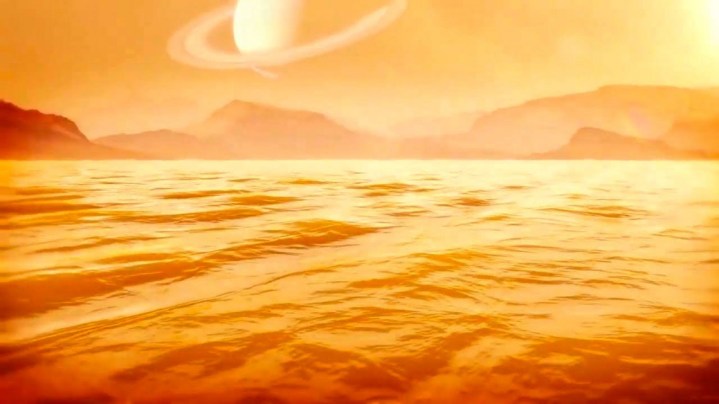
For life as we know it to flourish, there are two essential ingredients: Organic compounds called hydrocarbons, and liquid water. Saturn’s moon Titan is known to be rich in hydrocarbons and does have H2O on its surface, but it is so far from the sun and so cold that the liquid water thought to be there is covered with an icy crust. Now, though, new research profiled in Science Magazine suggests that there is a way that these hydrocarbons and this liquid water could mix, creating the perfect petri dish for life to potentially emerge.
The international team of researchers from Brazil, Canada, the U.S., and France, looked at the impact craters which can be seen on Titan’s surface and investigated what would happen when an asteroid or comet struck the moon. They found that these impacts would generate heat which would melt a puddle in the icy crust and allow the organic compounds to interact with liquid water.
“If you have a lot of liquid water creating a temporary warm pool on the surface, then you can have conditions that would be favorable for life,” Titan expert Léa Bonnefoy said to Science Magazine. “If you have organic material cycling from the surface into the ocean, then that makes the ocean a bit more habitable.”
The researchers simulated an impact similar to the one which created the moon’s largest crater, Menrva, which is 264 miles wide. The liquid water generated by such an impact wouldn’t last forever, but would last for around 1 million years — which could be long enough for bacteria to evolve.
Titan does have other liquids on its surface, and if you popped by for a visit you’d see features that look familiar like lakes and weather systems including rain. But these aren’t composed of water — they’re composed of liquid methane. These features are still of interest to researchers though, as recent discoveries found that Titan’s largest sea of liquid methane, Kraken Mare, is at least 1,000 feet deep and could be explored by a submarine.
To learn more about this singular moon, NASA plans to send a drone called Dragonfly to Titan in 2027, so we might finally get a better look at this intriguing place.



